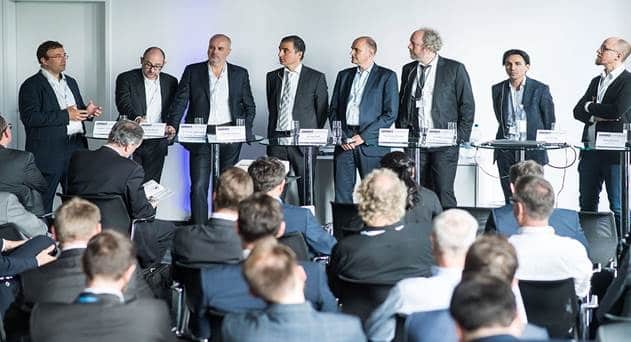At the recent connect 5G Kongress 2017 in Munich, Telefónica Germany's CTO Cayetano Carbajo Martín said that Telefónica see the revolutionary side of 5G where the network architecture will change radically.
Cayetano Carbajo noted that, "Concepts like Network Function Virtualization (NFV) and Network Slicing will allow a more efficient use of hardware components which are the base for many innovative applications. Software defined network (SDN) based on a fiber optic network will enable a smooth rollout."
During the 5G conference one thing became clear: “Racing for peak rates” won’t get the mobile communication providers anywhere on the way to 5G – this is not only the opinion supported by Michael Reinartz, Area Director Innovation of Vodafone, and Martin Bouchard, Senior Vice President Technical Planning & Rollout of Telekom. The focus is on the user experience: Consumers should be able to use their services without disturbance, for instance when streaming videos or music. This should be possible irrespective of whether the bandwidth is 10, 100 or 500 mbps, said Telefonica Germany.
With the future 5G network, customers will benefit from lower latencies and a higher reliability for particularly demanding applications. It connects the complete spectrum of digital devices far beyond the kind of connectivity that M2M solutions offer today. Even the interaction of the 5G mobile network with other networks, such as WiFi and LTE, will be possible. The new gigabit network is also efficient. Its energy consumption can be reduced in particular for IoT applications. Some applications will in the future run for more than ten years on just one battery. Even if no one can as yet predict all future use cases, three significant new fields of business are sure to be opened up:
 |
Massive Machine Type Communications (MMTC): Evolution of IoT applications such as Smart Cities, Smart Grids, Smart Metering. |
 |
Enhanced Mobile Broadband (eMBB): Expansion of capacities that allow for higher data rates to be transmitted, so that more users can benefit from 4K/3D video streaming as well as VR/AR applications. |
 |
Ultra-Reliable and Low-Latency Communications (UrLLC): Connected driving and automation of the industries. |
Cayetano Carbajo is convinced that Telefónica will drive forward the transition to 5G significantly : “Telefónica is very optimistic that we as a mobile communication provider will always be able to make a difference by offering our long-term industry experience, valid client contacts and connectivity as managers of big networks. And: Telefónica as a provider with a high level competence will be part of the new ecologic system”.


















